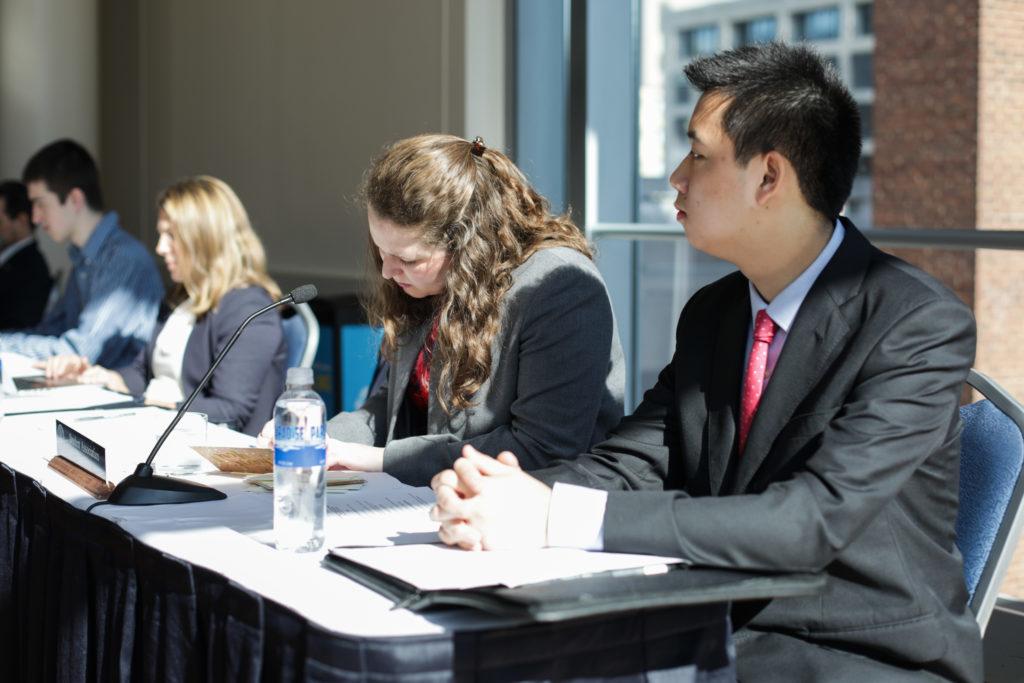The Board of Trustees will begin exploring ways to give students a greater say on the Board next month after a push by student leaders.
Former Student Association President Erika Feinman presented a formal list of recommendations to members of the Board Thursday, detailing how to add a student to the University’s highest governing body after nearly a year of research and preparation. The Board’s top official said there are obstacles to making a student a full voting member of the Board, but trustees would consider the recommendations at its retreat next month.
The move marks a step forward on one of the major platform points of Feinman’s 2016 presidential campaign.
Feinman declined to provide details about the specific recommendations. They said they don’t think the Board will reject their proposal outright.
“The recommendations that we gave are specific and outline what we feel would be the best process in terms of selection processes, orientations, terms – really every kind of detail that goes into creating a student representation model,” they said.
Feinman made inducting a student on the Board a major focus of their SA presidential bid last spring, saying students deserve a voice in the Board’s influential decisions regarding the University’s finances and priorities.
Nelson Carbonell, the chairman of the Board, created a task force last June made up of students and trustees to analyze how students are represented on other universities’ boards and how student representation would work at GW.
The task force presented its 63-page report to the Board’s Governance and Nominations Committee Thursday. Carbonell said the Board had not made a determination about the committee’s suggestions.
“We don’t have the answer, because we still have to have the conversation, but it’s really going be part of the whole package to decide how to do this, not just ‘we’re gonna do something specifically around the student task force,'” he said.
There were five students on the task force, including Feinman, former SA Executive Vice President Thomas Falcigno and three members affiliated with the Board either through current or past membership or involvement.
The committee researched student representation at 12 private universities, including some peer schools, like Georgetown, Southern Methodist and Tufts universities, Feinman said.
There is one student on the Board of Trustees at American University, one of GW’s peer institutions. At New York University, the Student Senators Council voted in favor of a resolution to place a student on NYU’s Board in February.
“They worked together with the students and really explored how to do that,” Carbonell said. “So we started out with the, ‘OK, we’re going to put a student on the Board,’ and then we said, ‘well, is that actually going to achieve what we want to achieve?”
The Board has not included students in the past because the Board’s charter doesn’t allow for faculty, staff or students to be members. To alter the charter would require action from the U.S. Congress, he said.
Carbonell said students occasionally provide updates to the Board’s various committees, but there is no formal student role on the Board.
He said short-term and long-term changes can be made to increase student involvement including reshaping committee operations and altering the Board’s bylaws. Trustees will formally review the bylaws in 2019, he said.
Former University President Stephen Joel Trachtenberg said he didn’t support student representation on the Board in 2004, but more than 70 percent of students voted in favor of student representation in a 2005 Student Association referendum.
The SA also created a report about student representation in spring 2014, according to documents obtained by The Hatchet.
“What we need to do, and I think what the task force really focused on, is what are the things that we’re trying to achieve?” Carbonnell said. “What is going to make the students really feel like they have a voice at the University? And let’s figure out how to do that within the confines of what we are able to do.”
SA President Peak Sen Chua, who is not a part of the task force, said he would continue the drive for greater student representation next academic year.
“I intend to support the final recommendations that were put forth by the task force and I will continue to advocate for student representation throughout my term,” Chua said.
Falcigno said this is the most influential project he has worked on in his three and half years on the SA.
“I think it’s the most impactful and influential project that any SA administration has worked on because we are talking about adding students and giving students a voice at the highest level of this University, so that’s something that required a lot of time and a lot of effort,” he said.
Johnny Morreale contributed reporting.





